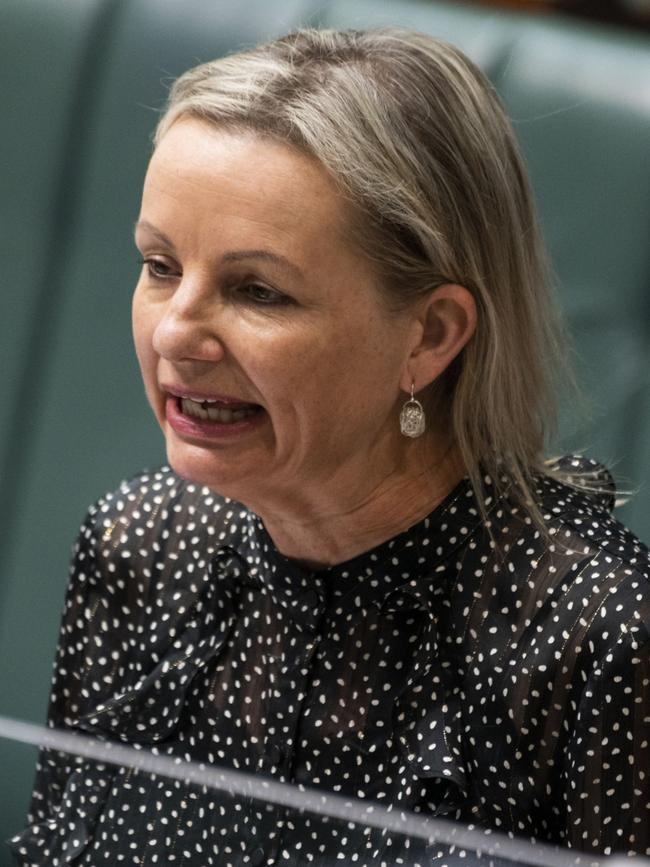Environment Minister Ley refuses to stop work at ancient Indigenous site
A plea to halt work on a $4.5bn urea plant to protect ancient Indigenous rock art has been knocked back by Environment Minister Sussan Ley.

The fate of ancient Pilbara rock art that some Indigenous groups believe is at risk from a $4.5bn urea plant will not be known until after the election after Environment Minister Sussan Ley knocked back a request for an immediate stop-work order at the site.
Traditional custodians from the Burrup Peninsula in northwest Western Australia had written to Ms Ley earlier this year urging her to order multinational group Perdaman to stop any construction work that could affect several sites around its proposed Karratha urea plant.
Under section 9 of the Aboriginal and Torres Strait Islander Heritage Protection Act, Ms Ley has the ability to prohibit activity in a culturally significant area that is at risk from development.
Ms Ley wrote to one of the concerned traditional custodians, Raelene Cooper, last week informing her that she would not be making a section 9 declaration because she was not satisfied the area was under “a serious and immediate threat of injury or desecration”.
The proposed works at the sites are not expected to begin until May 23, which will fall after the election. Concerned traditional owners will have the opportunity to make another section 9 application closer to that date.
The minister will also weigh whether to grant long-term protection to the sites under section 10 of the act, with an evaluation of the sites understood to have begun.
Four potentially sensitive sites not identified during the formal assessment of the Perdaman development are at the centre of the push for protection. The sites include a piece of rock art that has been described as a culturally sensitive image of particularly high significance.

Three pieces of rock art are proposed to be relocated as part of the plans, which have received the blessing of Murujuga Aboriginal Corporation (MAC), the group that represents the five Indigenous language groups of the Burrup.
But representatives of several of those language groups have spoken out against the plans and the corporation’s support for the project.
A spokesman for Ms Ley confirmed that the minister had decided against an emergency declaration, given the work in question was not imminent.
“Works are not scheduled to commence until late May,” he said. “In addition, the Western Australia Minister for the Environment … confirmed the approval granted by the Western Australian government for the project includes a condition that requires the proponent to submit a cultural heritage management plan following consultation with the Murujuga Aboriginal Corporation and it is the view of the Western Australian government that works to relocate the petroglyphs will not be undertaken in the coming weeks.”
Vikas Rambal, the chairman and managing director of Perdaman, said the company had all relevant approvals to start work.
“We are working very closely with MAC,” he said.
“MAC has been satisfied with Perdaman consultation and the way forward on the project.”
The Burrup Peninsula is home to more than one million rock art carvings, many of which date back tens of thousands of years. The cultural significance was at the centre of a government submission applying to UNESCO for the area to be granted a World Heritage listing in 2020.
The impact on that rock art from the development of heavy industry in the area has long been a cause for contention, and there have been concerns in recent years that increased acidic emissions in the area could cause irreversible damage to some of that rock art.




To join the conversation, please log in. Don't have an account? Register
Join the conversation, you are commenting as Logout